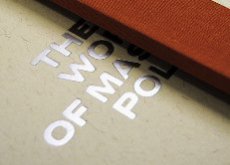How’s this for a creative way to liberate James Joyce’s Ulysses? From Cleo Hanaway of Oxford University. — SC
 ULYSSES ILLUSTRATION WORKSHOP — Discovering James Joyce’s Ulysses through your own illustrations. Saturday, 5 May 2012, 14:00 until 17:00. The Education Studio, Ashmolean Museum , Beaumont Street, Oxford, OX1 2PH. The event is run by ARTISJUSTAWORD. Join in the conversation on Twitter (#ulydraw) and Facebook.
ULYSSES ILLUSTRATION WORKSHOP — Discovering James Joyce’s Ulysses through your own illustrations. Saturday, 5 May 2012, 14:00 until 17:00. The Education Studio, Ashmolean Museum , Beaumont Street, Oxford, OX1 2PH. The event is run by ARTISJUSTAWORD. Join in the conversation on Twitter (#ulydraw) and Facebook.
Why Ulysses and Why Illustration?
Unfortunately, some great stories come in daunting packages. James Joyce’s Ulysses (1922) is a good example. Totalling around 800 pages, the book is not a quick read. And it is often considered difficult, due to its experimental writing techniques. Don’t be put off: Ulysses is one of the best stories ever written.
Whilst following two men around Dublin, Ulysses discusses love, relationships, the human body, the human mind, politics, history, art, literature, music, film, and much more. There really is something for everyone. Readers gain intimate insights into the characters’ experiences and thoughts. As well as painting a familiar and accurate picture of human life (warts and all), Joyce conjures up some truly beautiful images, such as the ‘heaventree of stars hung with humid nightblue fruit’ from the ‘Ithaca’ episode.
Whether you fancy learning more about Ulysses, or just want some inspiring words to get your creative juices flowing, join us in an innovative (and less daunting) way of reading. We will be addressing this question of whether illustration is a form of interpretation whilst offering an absolute beginner’s introduction to Ulysses and to various illustration techniques and philosophies.
There will be two 10-minute talks: one by Cleo Hanaway (an Oxford University doctoral student writing on Ulysses) and the other by Joseph Wilkins (a professional illustrator). Participants will experiment with mono-printing and other techniques as they produce illustrations for Ulysses. We will also hear some Joycean songs, courtesy of Phil Oakley and Chris Beard from Oxford-based band Flights of Helios. Illustrations will be shown in Dublin at the International James Joyce Symposium.









